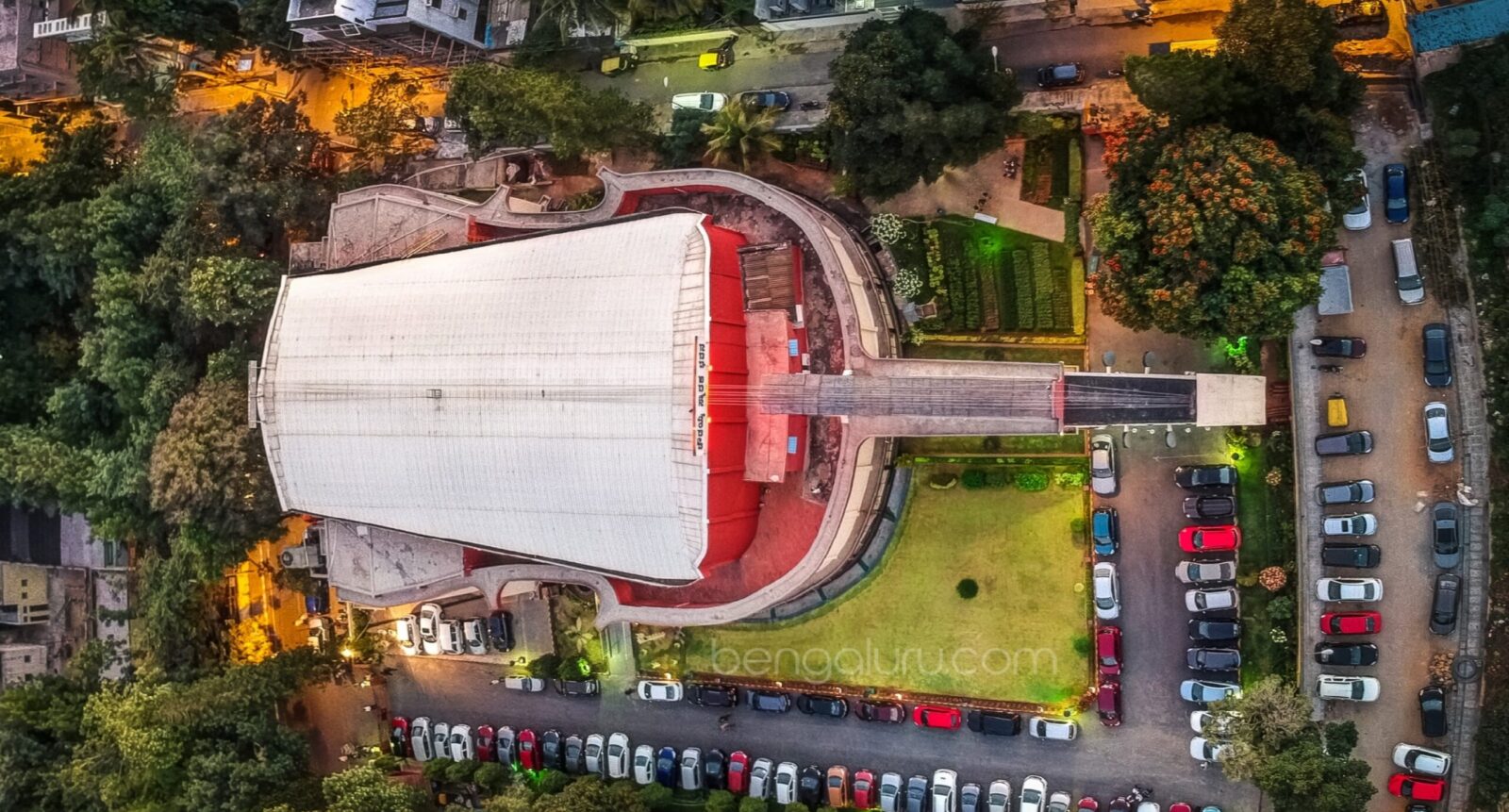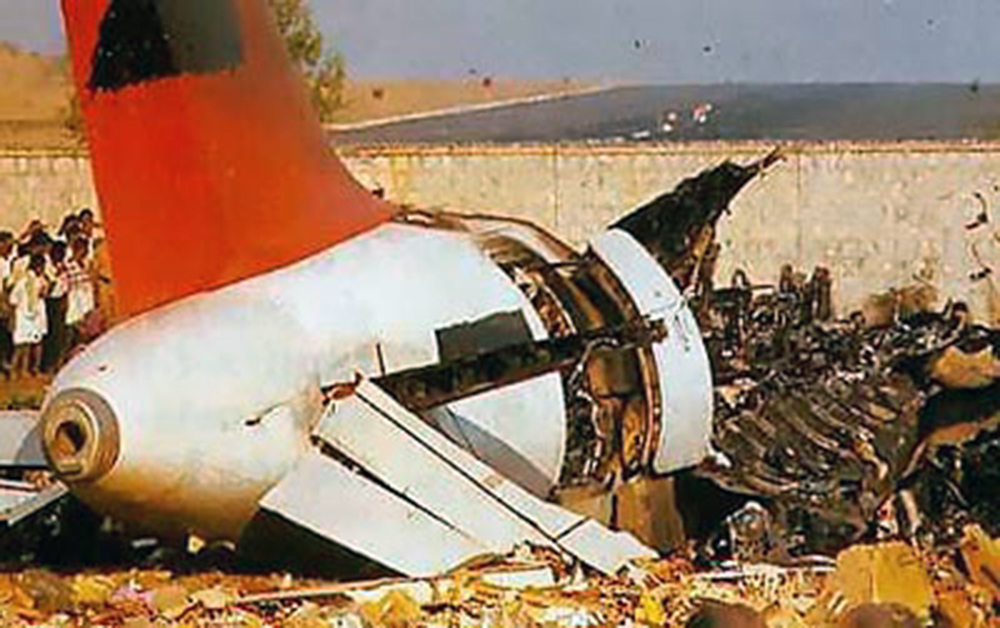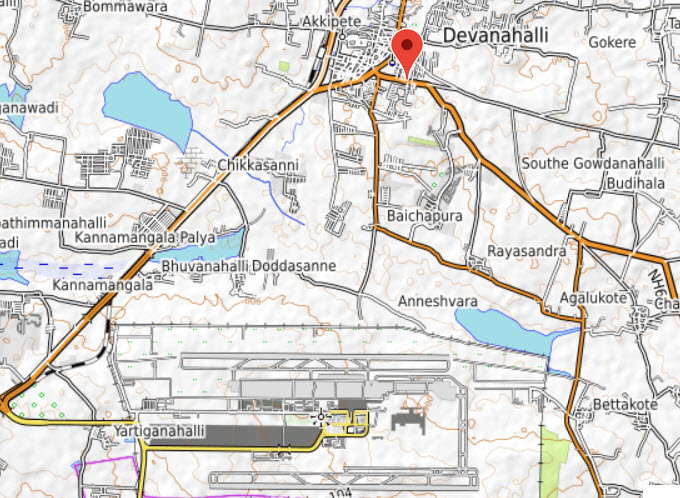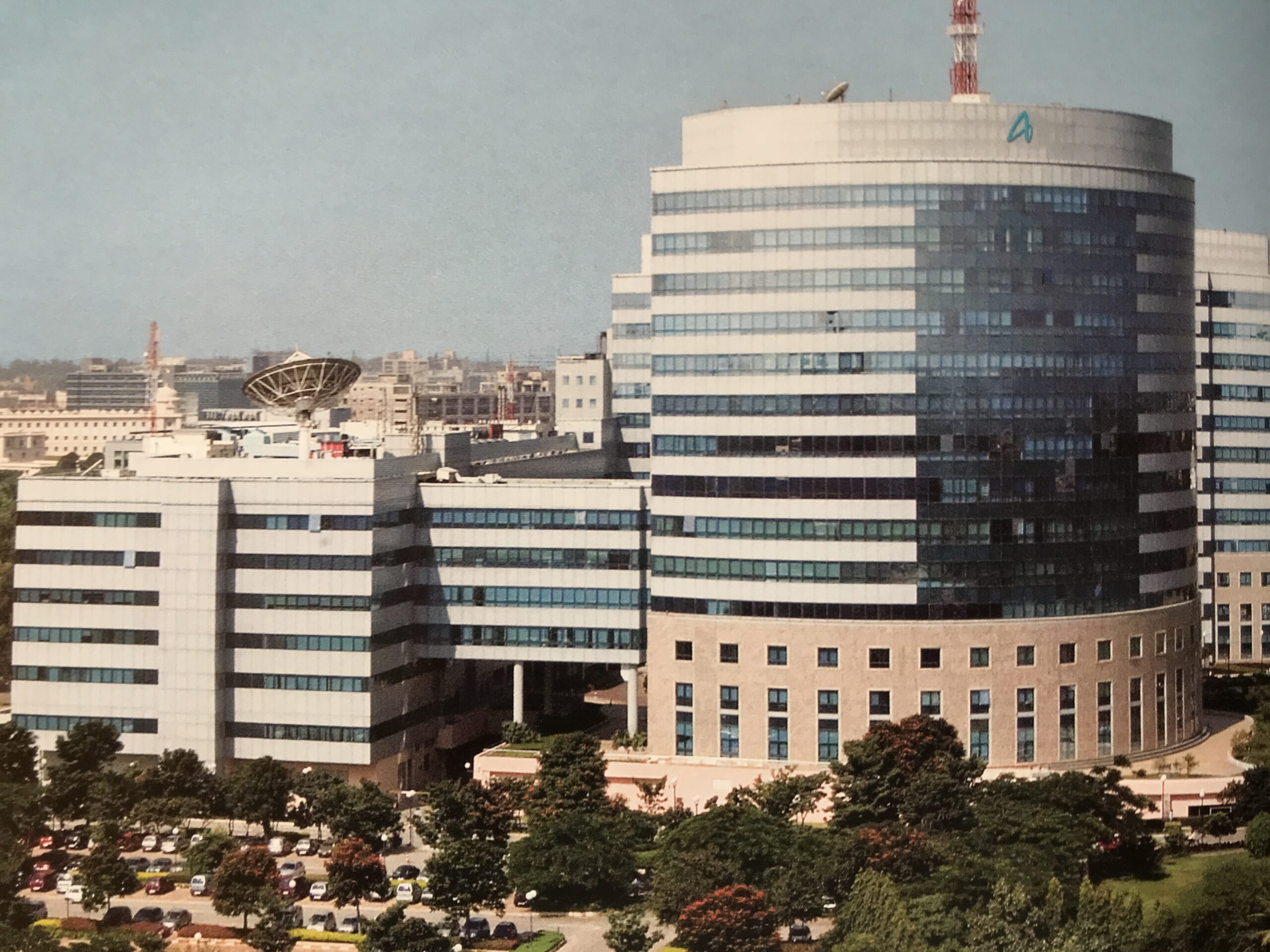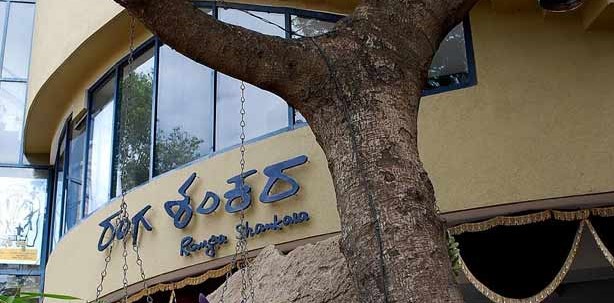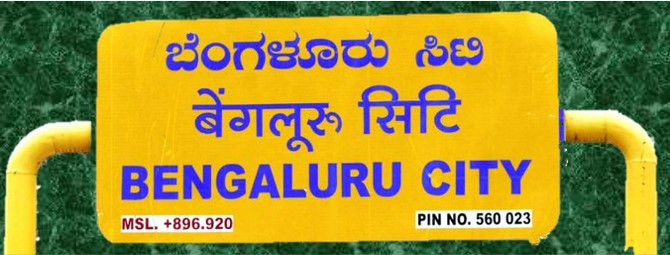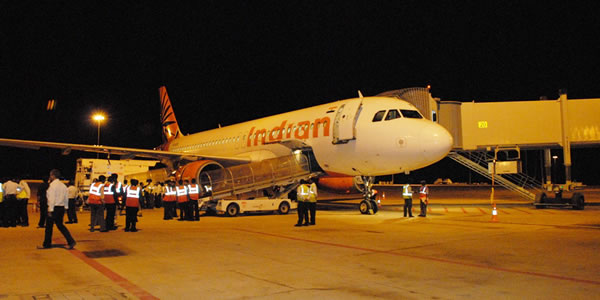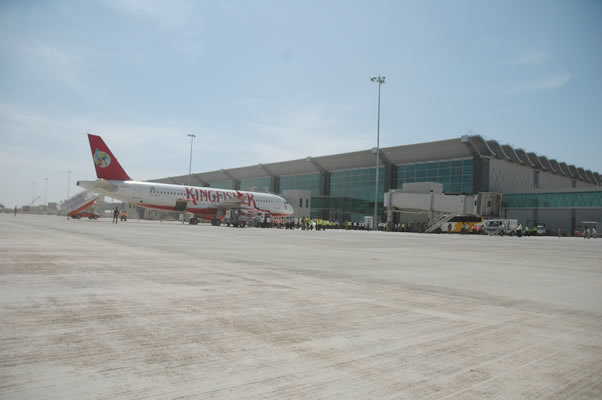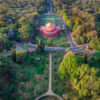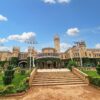Bengaluru through the ages 1972 AD to 2011 AD
We have documented the major events in the history of Bengaluru in this series. While many of you will be familiar with them, we have scoured archived government documents, books and journals to bring out new facts that were not well known. In addition, interesting images embellish the words to provide a complete picture. We hope you enjoy the series.
-
September 1972
Indian Space Research Organisation (ISRO)
Indian Space Research Organisation (ISRO) headquarters was moved from Ahmedabad to Bengaluru in September 1972. The organisation was formed in 1969 under the newly created Department of Space to manage the country’s space program. The headquarters performed all planning, programming and co-ordination under Chairman Satish Dhawan and Scientific Co-Ordinator Prof PD Bhavsar.
The Indian Scientific Satellite Project (ISSP) established by Prof UR Rao in December 1972 at Peenya (then a village on the outskirts of the city), ultimately resulted in Aryabhatta, India’s first indigenous satellite.
-
October 28, 1973
Indian Institute of Management (IIM)
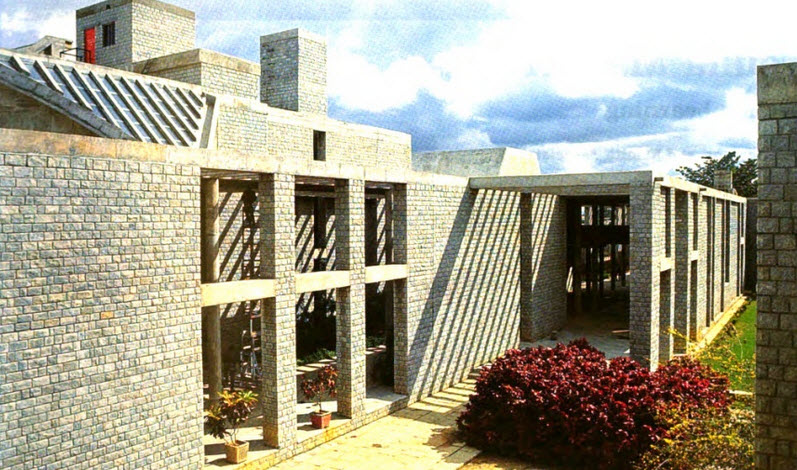
Indian Institute of Management (IIM), third in the country, was established with an inaugural address on October 28 1973 by Prime Minister Indira Gandhi. NS Ramaswamy was the founder-director of the institute. The total built-up area of the institute is 54000 sqm and cost ₹18 crores.
Image: IIM Bengaluru Campus on Bannerghatta Road
-
February 1, 1974
Cauvery Water
Cauvery water supply was started to the city. The water from River Cauvery at Shivanasamudra Balancing Reservoir was conveyed through the Shimsha Power Channel to Netkal Balancing Reservoir which supplied water to the Shimsha Hydel Station. It was from this reservoir that water was supplied to Bengaluru.
A water treatment complex was setup at Thorekadanahalli. A 77.5 km pipeline of 1200 mm diameter steel was laid from Thorekadanahalli to South End Circle in Bengaluru. The project cost ₹35 lakhs and was completed on February 1, 1974.
-
November 22, 1974
First Cricket Test at Bengaluru
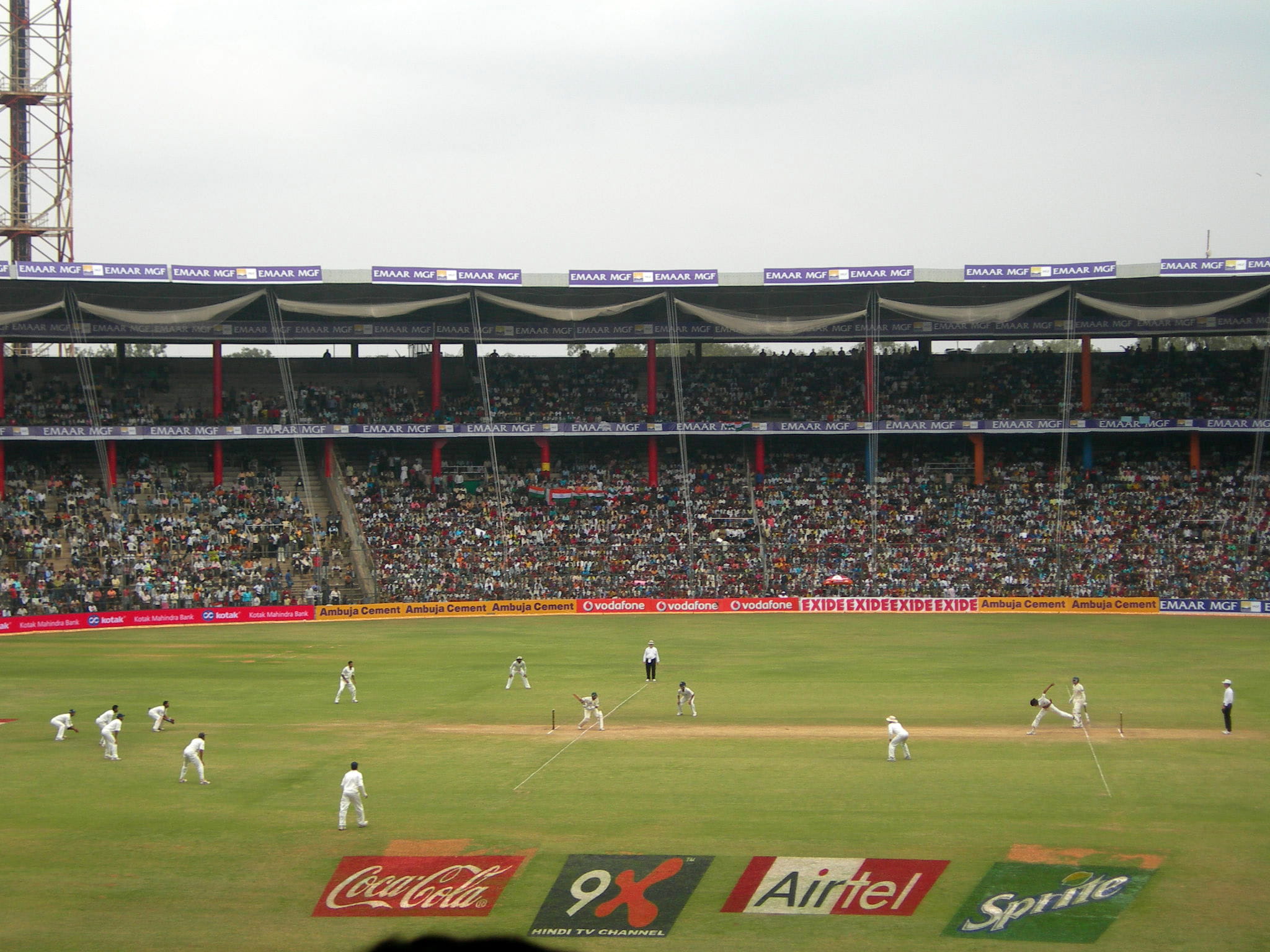
The First Cricket Test Match in Bengaluru against West Indies was played at the (then) KSCA Stadium. The President of India Fakhruddin Ali Ahmed inaugurated the first Test Cricket Match. The start of the match was delayed due to rain and the stadium was incomplete with bamboo poles holding up the temporary roof. Despite all this, a daily crowd of about 45,000 fans ensured a sell out. West Indies won the test by 267 runs.
Image: A match in progress at Chinnaswamy Stadium, earlier known as KSCA Stadium
-
1974
Jayanagar Shopping Complex and Public Utility Building
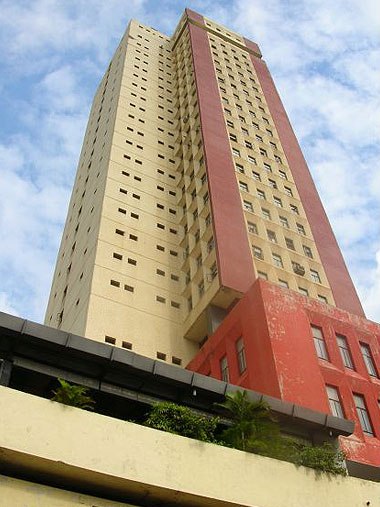
The Corporation of the City of Bengaluru (as BBMP was known earlier) completed two mega shopping-cum-office complexes. Interestingly, the two projects were in complete contrast – with the Jayanagar Shopping Complex spread out horizontally while the Public Utility Building was a skyscraper.
Jayanagar Shopping Complex was designed by Ms. Karekar and Sundaram and built at a cost of ₹2.54 crores. It occupied about 15,000 square metres in Jayanagar 4th Block with space for shops, offices and a movie theatre ‘Poonam’ which was later renamed as ‘Puttanna Chitra Mandira’.
The Public Utility Building was designed by Ms. Karim Noorani and Co. At 356 feet and 18 floors it was the tallest building in India at the time. Its initial estimated cost was ₹1.75 crores and consisted of shops, office space and a movie theatre initially known as ‘Symphony’ and later as ‘Shankar Nag Chitra Mandira’.
Image: Public Utility Building was the tallest building in the city for many years
-
December 8, 1975
St. John's Medical College Hospital
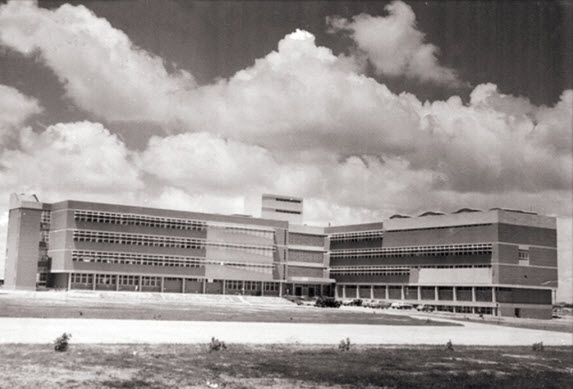
St. John’s Medical College Hospital started on December 8, 1975. Spread over 132 acres of verdant campus it was an initiative of Catholic Bishops Conference of India who established the CBCI Society for Medical Education. The college under the direction of Dr Mary Glowrey was opened in 1963 with 50 students at St Mary’s Orphanage (Cooke Town). The foundation Stone for the new campus was laid by Governor VV Giri on July 27, 1965 and shifted to the current location in 1968. Clinical Services before the hospital were initially at St Martha’s Hospital.
In 1968, Senator John McCormack, the Speaker of the US House of Representatives offered to provide a grant of $6.5 million for the construction of a 500-bed hospital on the new campus beside the new medical college. On August 3, 1971, the cornerstone of the hospital was laid by Governor Dharma Vira, in the presence of Kenneth B. Keating, the US Ambassador to India. In August 1975, a special allocation of $3,250,000 (₹26,000,000) was given by the US under PL-480 (the Agricultural Trade Development and Assistance Act).
Image: St. John’s Medical College and Hospital
-
June 17, 1976
Bengaluru Development Authority (BDA)
Bengaluru Development Authority (BDA) constituted on June 17, 1976 after merging the Bengaluru City Improvement Trust Board (setup in 1945), City Planning Authority and the Karnataka Housing Board (the department that covered Bengaluru). It was set up under the Bengaluru Development Authority Ordinance of 1975 notification issued on December 20, 1975.
BT Somanna was the first chairman. Charles M Correa, then a Consulting Architect to the Government was a part time member of the authority.
-
June 12, 1978
Regional Passport Office (RPO)
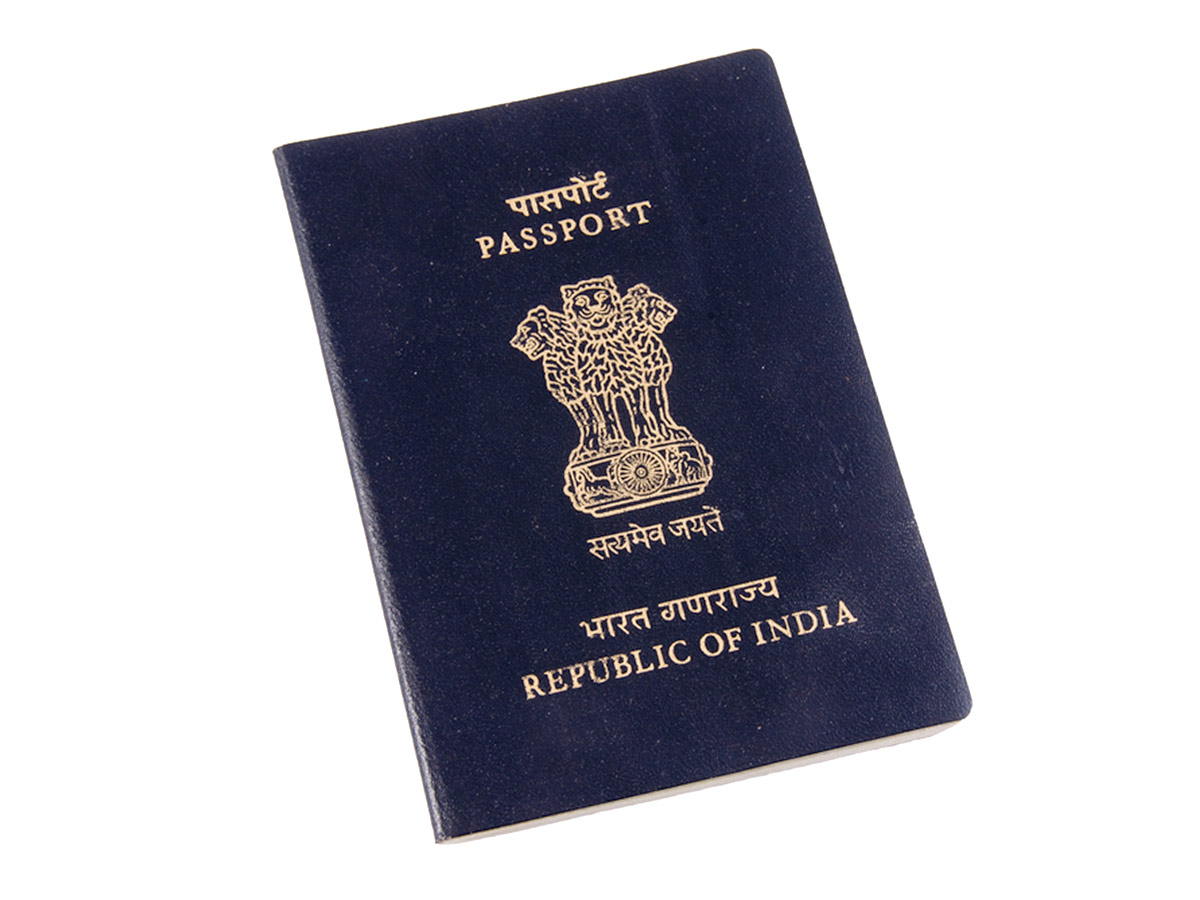
Regional Passport office with jurisdiction of Karnataka opened on June 12 1978 at Shankarnarayan Building on MG Road. At the time, the Passport Fee was ₹50.
17,500 applications were received in 1978 and 17,116 passports were issued.
-
1980
Parthenium
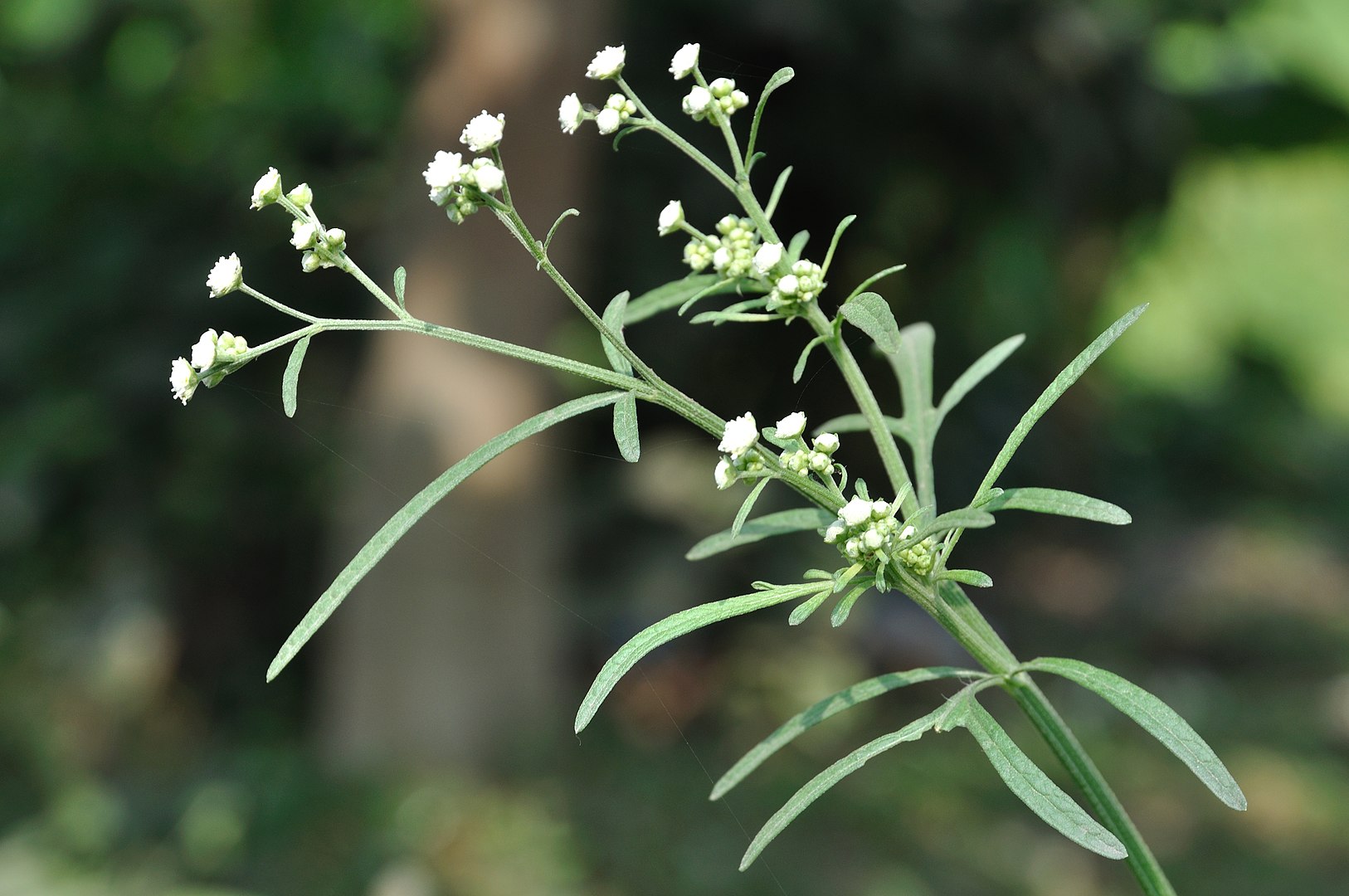
Parthenium weed spreads in Bengaluru. It is presumed that it spread to the city along the Pune-Bengaluru highway. About 2400 acres of land was covered with this weed. The weed originally came to India in the 1950s through wheat supplied by the USA as part of the PL-480 program. N Lakshman Rau appealed to voluntary organizations such as the Bengaluru University Youth Council to help remove the weed.
-
November 15, 1980
Chowdiah Memorial Hall
Chowdiah Memorial Hall building with a seating capacity of 1045 people was inaugurated on November 15, 1980 by Governor Govind Narain. It took seven years to construct at a cost of ₹36 lakh (US$50,000). The auditorium is designed as a seven stringed violin, complete with strings, keys and a bow. It was constructed by Academy of Music in memory of Mysore T Chowdiah who passed away in 1967.
Interestingly, there was a controversy about a ₹20 lakh on the spot grant for the Music Hall by Chief Minister Gundu Rao without the sanction of the House.
-
December 1980
Public Sector Strike
Over 1,25,000 public sector employees from BEL, DEML, HAL, HMT and ITI formed a Joint Action Front (JAF) and went on strike. The workers wanted the government to implement a wage agreement so that their salaries would be on par with workers of BHEL. The strike lasted 77 days but the workers did not succeed as the government did not agree to their demand. Ultimately it resulted in a 26-day lockout before an agreement was signed between management and workers to refer the matter to National Industrial Tribunal. Fifteen years later, the matter was still stuck in Supreme Court.
-
1983
Electronics City
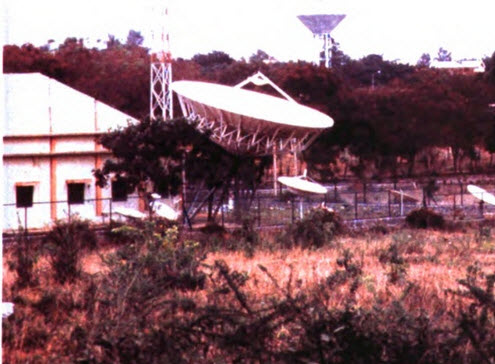
Electronics City was the brainchild of R.K. Baliga, the first Chairman and MD of Karnataka State Electronics Development Corporation (KEONICS). He came up with the idea in 1978 but it became a reality only in 1983 with the liberalisation of the licensing policy. KEONICS established Electronics City on 332 acres of land, 18 km outside the city in Konappana Agrahara and Doddathogur villages.
The total investments in Electronics City was between ₹300 to ₹350 crores. It housed more than 100 companies including industry leaders such as Digital Equipment India Limited, Motorola, Infosys, Wipro, Siemens and Hewlett Packard. Under the Software Technology Parks of India (STPI) program of Department of Electronics, the first such STPI was established at the Electronics City. It was expected to have a turnover of ₹800 crores.
Image: Satellite station at Electronics City, Bengaluru
-
September 15, 1984
Wheel and Axle Plant
Wheel and Axle Plant was opened on September 15, 1984. It is one of the largest industrial plants in South Asia spread over 120 hectares at Yelahanka and cost ₹150 crores. It’s initial plan was to produce 70,000 wheels and 23,000 axles per year. STUP Consultants Limited of Bombay were the architects and consulting engineers. The Ministry of Railways chose Bengaluru as the location in 1971 and it was dedicated to the nation on January 18, 1980 by President N Sanjeeva Reddy.
-
August 15, 1986
Bengaluru District bifurcation
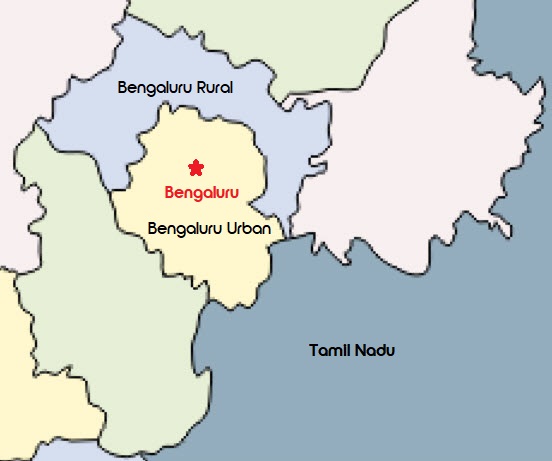
Bengaluru district divided into Bengaluru (Urban) and Bengaluru Rural. Bengaluru City was the headquarters for both districts. Bengaluru (Urban) was the smallest in area measuring just 2191 square km, which was less than even Kodagu District. However in population it was the biggest with over 35 lakh people at the time. Bengaluru Rural was 16th in size with an area of 5814 square km.
Subsequently, Bengaluru Rural was bifurcated into Bengaluru Rural and Ramanagara District in 2007, reducing Bengaluru Rural to 2298 square km. Bengaluru Rural consisted of many prehistoric sites, hills and forts. Today, with the rapid expansion of the city, parts of the Rural district have become part of the city itself.
Image: outline map showing the boundaries of Bengaluru (Urban) and Bengaluru Rural districts
-
September 1986
Texas Instruments
Texas Instruments (TI) opened in September 1986 after two years of negotiations with the government. Initially attracted by the country’s engineering talent, TI established a software design center in Bengaluru with 17 engineers. Initial investment was $5 million and it was 100% owned by the US parent company.
The starting salary for a Computer Science or Electrical Engineering Graduate was about ₹5400 per month. The office on Cunningham Road was famous for the dedicated satellite dish on top of the building used for transmitting code to the Dallas US office. TI exported about ₹4.5 crores worth of software in 1988.
-
1987
BMRDA
The Government of Karnataka constituted the Bengaluru Metropolitan Region Development Authority under BMRDA Act in 1985. One of the aims was to improve the co-ordination between various authorities responsible for the governance of Bengaluru but it is debatable on how successful it has been in this aspect.
BMRDA undertook the task of preparing the Structure Plan for the Region covering 8005 sq.km (second largest metropolitan area in India) in 1998. The first Structure Plan was approved by the Government of Karnataka in March 2005.
-
February 14, 1990
Airbus A320 Crash
Airbus A320 flight IC605 from Mumbai crashed 400 meters short of the Bengaluru HAL airport runway on its final approach, killing 90 of the 146 passengers on board, including the two pilots. The aircraft had just 366 flight hours and 300 landings before the crash.
Readout from the voice recorder and flight data recorder showed that the right-seat pilot switched the autothrottle from speed mode to idle mode just before the crash causing the speed to fall below the minimum approach speed. The aircraft descended below the normal approach path and touched down heavily on the golf course adjacent to the airport. It bounced, went through small trees, touched down again before coming to rest near the airport boundary wall.
Image: Airbus A320 crash remains just outside the airport boundary wall.
-
1991
Devanahalli selected for new airport
A committee headed by S Ramanathan, former Chairman of AAI reviewed five sites and selected Devanahalli as site for new international airport for Bengaluru. A few years later, 4000 acres of land was earmarked for the airport.
-
February 23, 1994
Infosys IPO
Infosys IPO offering opened on February 23, 1993 and the stock was listed on stock exchanges in June 1993. The offering was priced at ₹95 per share. Trading opened at ₹145 per share. The company had a revenue of $5 million in 1993 and it raised about $4.4 million through the offering. The company had its offices in Koramangala and Jayanagar before moving to Electronics City.
-
March 1995
New Bengaluru Airport MoU
Karnataka government and the Tata-Raytheon-Singapore consortium sign Memorandum of Agreement to build and operate India’s first privately operated international airport at Devanahalli. However the airport construction was mired in controversy and delays. Finally, on June 25, 1998, Tatas pulled out of Bengaluru International Airport project citing delays and unviability.
A second agreement was signed on January 23 2002 between KSIIDC, AAI, Siemens, Flughafen Zurich AG, Larsen & Toubro to build the airport at an estimated cost of ₹2000 crores. Financial Closure was achieved on June 23, 2005 and the airport was expected to be operational by April 2008.
-
September 1995
International Tech Park (ITPL)
India and Singapore established ITPL in September 1995. It was a joint venture between Singapore Information Technology Park Investment Ltd, Tata Industries Limited and Karnataka Industrial Areas Development Board. Tatas and Singapore consortium held 40% each and KIADB held 20%. ITPL was spread over 172,000 square meters of area and was inaugurated by Singapore Prime Minister Goh Chok Tong.
Image: ITPL Campus
-
October 28, 2004
Ranga Shankara
Ranga Shankara, Arundathi Nag’s dream venture named after Shankar Nag opened its doors to theatre aficionados. Its construction took about 3 years at a cost of ₹3.5 crores. The auditorium is spread over 12500 square feet and can seat about 300 people. Its unique design by Mistry Architects included electronically operated lighting system, seating for all with a clear view for all and natural sound propagation that ensured that even whispers carried to every row.
The project had enormous support from many sources. The land in the southern suburb of JP Nagar was given by Government of Karnataka on a 30 year lease to Sanket Trust along with a ₹75 lakh contribution to the trust. Jindal Group donated cement used in construction and Hutch Telecom were sponsors for three years.
Image: Ranga Shankara auditorium at JP Nagar
-
November 1, 2006
Bangalore becomes Bengaluru
Bangalore was officially named as Bengaluru after the Bruhat Bengaluru Mahanagara Palike (BBMP) passed a proposal to change the name on September 27, 2006.
Image: Signboard at Bengaluru Railway Station
-
May 24, 2008
Bengaluru has a new international airport
The new Bengaluru International Airport (now called Kempegowda International Airport) was opened for operations with Air India AI 609 flight from Mumbai landing at 10 pm. The same aircraft left for Singapore as IC 957 after midnight. Before the opening, a public trial was conducted on March 7, 2008 with the landing of a Kingfisher flight from Mumbai at 10 am (image below).
Apart from airport operations, connectivity was an issue. By the second half of 2007, BIAL took it upon itself to ease the connectivity for passengers by building a trumpet interchange that now connects the National Highway (NH 7) to the airport. This was completed in a record time of eight months.
Top Image: First flight landing at Bengaluru International Airport on May 24, 2008
-
October 20, 2011
Namma Metro
Bengaluru Namma Metro (meaning Our Metro) is operational with the first leg of 7 km between Mahatma Gandhi Road and Byappanahalli commissioned on October 20, 2011 at 4 pm..The project was approved by the Government of India on January 20, 2007. The original target completion date for 42.3 km length was March 31, 2013. Standard gauge (1.435 m) tracks were used and total estimated cost was Rs 8158 crores. Implementation was managed by a SPV owned 50:50 by the Central and State governments.
The coaches were made out of stainless steel and initially manufactured by Hyundai Rotem of Korea and Mitsubishi Electric Company of Japan. BEML was licensed to manufacture the coaches in Bengaluru. Namma Metro avoided having visible overhead power lines by using an electric third rail next to the main track. Swedish company ABB designed, supplied and installed substations for supply of electricity. Alstom provided controlling and signalling systems
Main Image: Chowdiah Memorial Hall © Amith Nag | Dreamstime.com
Featured Posts
Recent Posts
T P Kailasam – The Dark Side of a Genius
August 5, 2024H V Savitramma – Writing for Women’s Rights
June 10, 2024Temples of Knowledge – Best public libraries of Bengaluru
January 22, 2024Bengaluru Palace turns 150
January 14, 2024

